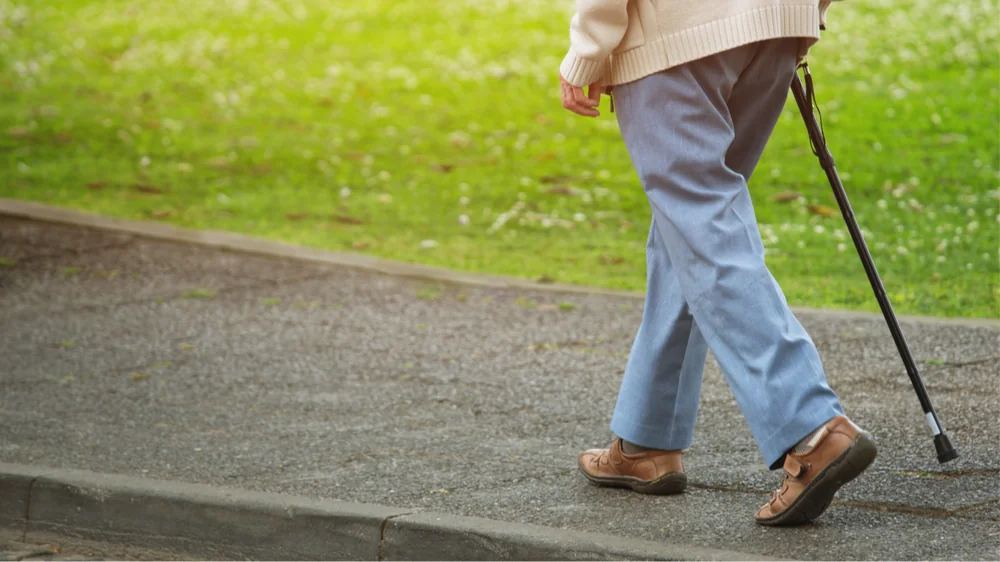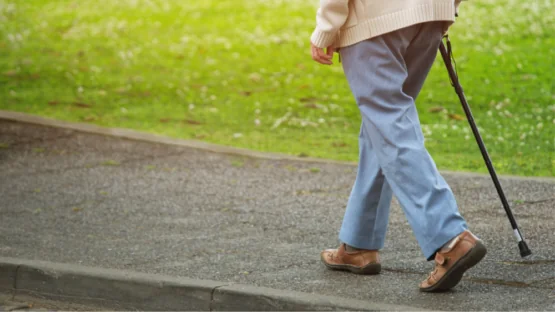Research published in Experimental Gerontology suggests that even smaller amounts of daily physical activity can benefit people over 60 [1].
Cardiometabolic health and physical activity
The positive influence of exercise on health is widely known. However, the recommended 150 minutes per week of moderate-to-vigorous exercise can be a big challenge to older adults.
With the help of 248 older adults from Brazil, these researchers focused specifically on cardiometabolic health. Cardiometabolic health is the health of the cardiovascular system, which is composed of the heart, blood, and blood vessels. They used a system that calculates cardiometabolic health scores by using metrics such as waist circumference, fasting glucose, blood pressure, blood triglycerides (a type of fat), and HDL cholesterol. They also measured participants’ daily step volume and intensity.
Most of the participants suffer from high blood pressure. About a quarter had type 2 diabetes or an abnormal amount of lipids in the blood (dyslipidemia). The majority also suffered from metabolic syndrome.
Every step matters
Researchers divided the study participants into a few groups. Each group was characterized based on daily step count. The inactive group walked less than 5,000 daily steps, the low active walked 5,000 to 7,499 steps, the active walked 7,500 to 9,999 steps, and the highly active walked more than 10,000.
After measuring metabolic syndrome scores and daily steps, researchers noticed that the active and the highly active groups had better cardiometabolic health than the inactive group. They didn’t find a significant difference in cardiometabolic health between the low active and inactive groups. They also noticed that increasing the number of steps by 1,000 a day is associated with better metabolic syndrome scores.
Previous research supports the results obtained in this study, although the numbers were different. In one paper, older adults who take at least 3,000 daily steps were found to have lower mortality risk. Lower risk was associated with increasing step count until somewhere between 6,000 to 8,000 steps. At that point, it had reached the best possible score and was not found to improve any further [2].
Another investigation also showed an association between 6,000 to 9,000 steps a day and a 40-50% lower risk of cardiovascular disease problems in older adults [3].
Intensity matters
Researchers also assessed the intensity of walking by assessing the peak 30-minute cadence. If it was less than 40 steps per minute, the group was categorized as lowest intensity. 40-59 steps per minute were considered low. The average-intensity group was 60-79 steps per minute, the high was 80-99 steps per minute, and the highest was more than 100 steps per minute.
The results indicated that not only does the amount of steps matter, but their cadence is also important for metabolic health. The average, the high, and the highest peak step cadence groups had better metabolic syndrome scores than groups with the lowest peak step cadence.
The group with the highest peak step cadence had the best metabolic syndrome score. The researchers also observed that increasing peak step cadence by ten steps per minute was associated with improving metabolic syndrome scores. This led the authors to suggest that for people who find it impossible to increase daily steps, increasing step cadence may be an effective alternative.
“Every move counts toward better health”
This paper and previous research suggest that increasing the amount and intensity of daily steps helps with improving cardiometabolic health and helps to reduce health risks in older adults. This is in accordance with WHO 2020 guidelines stating that “every move counts toward better health.”
This research suggests that achieving the popular 10,000 steps a day is not required. Even smaller amounts of activity seem to show health benefits. Such smaller numbers of steps are more achievable for older adults. For example, the increase of 1,000 steps corresponds to a 10-minute moderate-intensity walk. This level of activity can be included in everyday activities.
Increasing daily steps is a low-cost and easy-to-implement method to improve cardiometabolic health that can be implemented even among people with limited incomes.
Literature
[1] Cabral, L. L. P., Browne, R. A. V., Freire, Y. A., Silva, R. M., Vliestra, L., Waters, D. L., Barreira, T. V., & Costa, E. C. (2023). Association of daily step volume and intensity with cardiometabolic risk in older adults. Experimental gerontology, 179, 112245. Advance online publication.
[2] Paluch, A. E., Bajpai, S., Bassett, D. R., Carnethon, M. R., Ekelund, U., Evenson, K. R., Galuska, D. A., Jefferis, B. J., Kraus, W. E., Lee, I. M., Matthews, C. E., Omura, J. D., Patel, A. V., Pieper, C. F., Rees-Punia, E., Dallmeier, D., Klenk, J., Whincup, P. H., Dooley, E. E., Pettee Gabriel, K., … Steps for Health Collaborative (2022). Daily steps and all-cause mortality: a meta-analysis of 15 international cohorts. The Lancet. Public health, 7(3), e219–e228.
[3] Paluch, A. E., Bajpai, S., Ballin, M., Bassett, D. R., Buford, T. W., Carnethon, M. R., Chernofsky, A., Dooley, E. E., Ekelund, U., Evenson, K. R., Galuska, D. A., Jefferis, B. J., Kong, L., Kraus, W. E., Larson, M. G., Lee, I. M., Matthews, C. E., Newton, R. L., Jr, Nordström, A., Nordström, P., … Steps for Health Collaborative (2023). Prospective Association of Daily Steps With Cardiovascular Disease: A Harmonized Meta-Analysis. Circulation, 147(2), 122–131.




